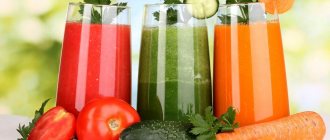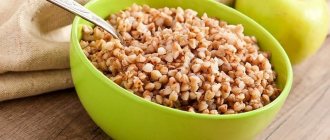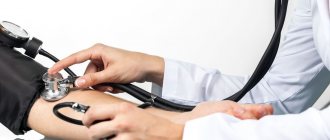Finding information about whether you can drink alcohol while following a diet is difficult. You have to rack your brains in search of answers to questions regarding drinking alcohol, losing weight, and effective training. Especially many questions arise when you want to drink and not harm your figure, i.e. looking for the lowest calorie alcohol.
Consider drinking alcohol while dieting – a key challenge. There will also be a table from which you can find out how many calories and what kind of alcohol it contains.
Is it possible to drink alcoholic drinks and cocktails while losing weight?
There can be no question of an unequivocal ban on alcohol consumption for those wishing to lose weight. But its consumption should be kept to a minimum, since exceeding the dose will harm the process of losing excess weight. This is connected not so much with the calorie content of alcohol, but with its effect on the body.
Important! The common belief that there is diet alcohol is completely wrong. All alcohol contains calories. You just need to choose the lowest calorie alcohol.
Alcohol is not good for weight loss
Let's figure out why you shouldn't drink while losing weight. Alcohol has a suppressive effect on the functioning of the cortex and subcortical areas of the brain. These areas are responsible for volitional behavior, the ability to think critically and make decisions. After drinking alcohol, the ability to control thinking and actions is impaired, which is why instinctive behavior is disinhibited - aggression appears, libido and the feeling of hunger increase. Therefore, being intoxicated, you can easily eat too much.
Alcohol is dangerous even the day after consumption. This is due to the formation of a hangover syndrome - many people experience a pronounced feeling of hunger. The condition develops due to individual characteristics of dopamine metabolism in the brain.
Alcoholic products contain a certain amount of calories. At the same time, each one is individual. It is a mistake to think that vodka is the lowest calorie alcohol. It contains a supply of calories almost equal to that of bread. This is due to the high calorie content in the alcohol from which vodka is produced. In a number of other alcoholic products, the calorie content is determined not only by the amount of alcohol in them, but also by the presence of impurities. This is especially true for cocktails.
Be sure to check out: Diet cabbage salad: the best recipes Safe cleansing: flax seeds for weight loss Kefir on a diet: are alternatives possible Proper castling: how to replace high-calorie treats and allergenic foods on a diet
Should you drink alcoholic beverages when doing sports and fitness?
Drinking alcoholic products while playing sports is definitely not recommended. Below are reasons why you should not drink when losing or gaining weight:
- alcohol disrupts the functioning of the cortex and subcortex;
- alcohol (especially strong) disrupts the absorption of nutrients;
- alcohol interferes with the formation of protein molecules necessary for muscle growth;
- alcoholic products negatively affect the production of gastric juice, which is why food cannot be fully absorbed;
- alcohol destroys the cells of the pancreas, which secretes enzymes necessary for digesting food;
- when absorbing ethyl alcohol, fat burning processes are disrupted;
- for the absorption of alcohol, a significant amount of enzymes that bind it is necessary, the release and operation of which requires effort from the body;
- Alcohol negatively affects the state of the nervous system and heart.
Important! Each person has their own sensitivity to alcohol, which is why the negative effects of drinking vary from person to person. Therefore, drinking alcohol, even the lowest calorie one, is not recommended.
Concept of compatible dose
This refers to a dose at which the harm from use does not exceed the benefits. Despite all the disadvantages, drinking alcohol can have a positive effect on your health:
- blood pressure decreases;
- blood flow in vessels, especially small ones, increases;
- the transmission of nerve impulses accelerates;
- metabolism increases, etc.
Important! Only high-quality alcohol in small quantities can bring benefits. In other cases, alcohol harms the body.
Consuming alcohol-containing products at a compatible dose will allow you to drink profitably. Especially in situations where it is impossible to refuse. However, the compatible dose is individual for everyone.
Does alcohol contribute to weight gain?
Excessive alcohol consumption contributes to weight gain - another reason why you should not drink while on a diet. Alcohol also leads to dehydration. Not only water reserves are lost, but also nutrients necessary to maintain metabolism at a stable level.
Weight gain when dehydrated occurs due to:
- A compensatory mechanism for weight gain - after the loss of water and nutrients, with their subsequent normal supply, a reserve is created in case of a recurrence of a dangerous situation. Reserve reserves are formed due to fat deposits.
- Reducing metabolic activity due to liver dysfunction is the most dangerous process.
The effects of different drinks on the body
Alcohol products affect the body differently - the effects of strong alcohol differ significantly from the effects of beer. This is due to the difference in composition. But the general principles of their impact are similar.
Vodka and other strong alcohol
Strong alcoholic drinks are also the highest in calories. The reason is a significant proportion of ethyl alcohol in their composition. They negatively affect the processes of weight loss (gain of fat deposits, decreased metabolism) and muscle growth.
The harm of strong alcohol to muscles is due to:
- destruction of protein molecules;
- decreased activity in the formation of new protein structures;
- disruption of the processes of absorption of nutrients from food;
- damage to nerve cells.
Wine: white, red, dry, fortified
When on a diet, it is best to drink wine. This is the best option for an athlete. Wine is not only the lowest calorie product, but also alcohol, which in moderate doses has a beneficial effect on the cardiovascular and digestive system.
Let's look at what kind of wine you can eat on a diet. The best option for an athlete or someone simply wanting to lose weight is red wine, especially dry wine. It is the least caloric among all wines and at the same time is not devoid of beneficial properties.
Important! Although it is now known which wine is best to drink on a diet, its excessive consumption causes significant harm to the body in conditions of a lack of calories.
It is allowed to drink dry red wine if you have stomach diseases in an inactive stage or problems with blood pressure. It can increase the levels of adrenaline and dopamine in the body. But you need to drink no more than 1 glass per day. Also, dry red wine at night will help you relax and fall asleep.
Beer
Let's figure out whether you can drink beer or not while on a diet and, in general, playing sports. Contrary to popular belief, hop product is the lowest calorie alcohol. This is due to the low content of ethyl alcohol in it. It also has a pronounced effect on the kidneys, which is why it is quickly excreted from the body.
Beer and weight loss don't mix
Although this is the lowest calorie alcohol, it cannot be consumed while following a diet. The reasons are the composition of the drink and the tradition of its use. The intoxicating product is prepared from components that negatively affect the figure, especially the stomach.
The drink contains a significant amount of plant analogues of female sex hormones. Their regular intake into the body leads to an increase in the proportion of fat deposits. Also, when consumed, the production of testosterone, the hormone responsible for muscle growth, is disrupted.
The effects of alcoholic beverages on the body
Alcohol is absorbed into the bloodstream almost instantly: first in the oral cavity, then in the gastrointestinal tract. If ethanol comes from food, this process occurs more slowly. Therefore, when a person has a heavy snack, he gets less drunk.
Alcohol is absorbed into the gastrointestinal tract, and food products “wait in line.” Metabolic processes slow down. As a result, fats are deposited in tissues.
However, you cannot take alcoholic beverages on an empty stomach. This will cause severe harm to the body.
Alcohol products have a diuretic effect. This doesn't just apply to beer. Any alcohol-containing drink dehydrates the body and washes away beneficial elements.
We are looking for the lowest calorie drinks: table of alcohol with calories
To lose weight, you must constantly maintain a calorie deficit in the body. Otherwise, the diet will be of no use. The following table will let you know how many calories are in alcoholic drinks:
| Drink | Calorie content (kcal per 100 g) |
| Guilt | |
| Semi-sweet white | 70 |
| Semi-sweet red | 66 |
| Sweet vermouth | 170 |
| Dry vermouth | 145 |
| Semi-sweet red | 80 |
| Dry red | 67 |
| Muscat | 160 |
| Pink sweet | 73 |
| Red sweet | 132 |
| Liqueurs | |
| Amaretto | 280 |
| Baileys | 327 |
| Coffee | 228 |
| Strong alcohol | |
| Brandy | 227 |
| Vodka | 234 |
| Gin | 225 |
| Cognac | 240 |
| Rum | 228 |
| Tequila | 210 |
| Whiskey | 250 |
| Beer | |
| Zhigulevskoe | 37 |
| Light (the proportion of dry matter in the wort is 11%) | 42 |
| Light (the proportion of dry matter in the wort is 20%) | 75 |
| Dark (proportion of dry matter in the wort 13%) | 40 |
| Light (the proportion of dry matter in the wort is 20%) | 74 |
| Non-alcoholic | 37 |
The lowest calorie alcohol on the list is beer. But since it is consumed in liters, with the usual portion you can consume an excessive amount of calories. For example, 0.5 liters of Zhigulevsky contains 203.5 kcal.
It is best to use dry red wine, since it is a product with a minimum calorie content and causes the least harm.
Lowest calorie alcohol
Typically, drinks are not considered as sources of excess weight. And this is true for any drinks except alcoholic ones. In reality, alcoholic beverages comprise up to 20% of all calories a person consumes per day. Where the average calorie intake increases by 300 calories per day, half of that increase comes from calories from drinks. And things can get even worse when it comes to alcohol.
The American Journal of Clinical Nutrition ranked alcoholic beverages as the second most caloric-dense beverage after “calorically sweetened beverages” (soft drinks). However, unlike soft drinks, there are many different versions about the effect of alcoholic drinks on human health (many have probably heard about the benefits of a glass of dry red wine). Everyone will probably agree that too much alcohol is harmful.
Now the question arises: if you want to drink an alcoholic drink and at the same time monitor your weight (the ideal body mass index can be calculated here), then how to measure the dose? In order to make the right choice, below you can find a comparison of different types of beer, wines and liqueurs.
Where do the calories come from?
Alcoholic drinks contain neither protein nor fat, and very few carbohydrates (with the exception of liqueurs and sweet wines). Where do the calories come from? Any strong drink contains alcohol, which is obtained by natural fermentation from grains, potatoes, fruits, and berries that have a certain nutritional value.
See also: Drunken hiccups are not so harmless
The calorie content of pure alcohol is 96% - 710 kcal per 100 g. This is slightly lower than the energy value of vegetable oil and lard, which are the highest calorie foods. Of course, no one drinks alcohol in its pure form, but it is the main component of any alcoholic drink, so the stronger the drink, the higher the calorie content. Low-alcohol drinks contain a small amount of alcohol, but they add sugar, yeast, and sweet carbonated water. They are lighter and more pleasant to taste, so they are consumed in larger quantities than strong ones.
How does it affect
Alcohol itself is a high-calorie product, and these calories are empty and do not bring any benefit. Once in the body, they are consumed first, and calories and nutrients supplied with food are stored in reserve. But the biggest insidiousness of various wines is that we rarely drink to drink. We usually drink to drink and eat, which causes us to gain excess weight.
In addition, alcohol increases your appetite, lifts your mood, dulls the feeling of fear and conscience (and all other feelings in general), and without shame you drag the eighth chop into your mouth to eat it with a cake.
Separately, it is worth noting the anesthetic effect of alcohol, which acts on receptors in the stomach - you stupidly overeat and don’t even feel your belly popping. And in the morning you eat again to resurrect from yesterday, because you need proteins and strength.
As you can see, alcohol can hardly be called a good companion in the fight for a slim body, but knowing some subtleties, you can outwit your metabolism.
Energy value
Which alcohol contains the least calories? The list of calorie content of alcohol shows the energy value of alcohol-containing drinks per 100 g and their carbohydrate content. The calorie content of alcohol is directly related to its strength and carbohydrate content.
See also: Amoxiclav and alcohol: can you drink together?
The list shows that the lowest calorie alcohol is light beer and dry wine. To clearly see which alcohol is the lowest in calories, and which drinks it is better to avoid drinking in order not to gain extra pounds, it is recommended to study this list. It contains alcoholic drinks in order of increasing calorie content per 100 g:
- Light beer, depending on the speed – 29–50 kcal.
- Dry wine white and red 12% – 66 kcal.
- Dry champagne – 70 kcal, semi-sweet – 87 kcal.
- Semi-sweet and sweet wine 12% – 98–132 kcal, depending on the variety and sugar content.
- Dessert and fortified wines – 160–170 kcal.
- Rum, whiskey, gin, brandy – 220 kcal.
- Tequila – 231 kcal.
- Vodka – 235 kcal.
- Cognac – 239 kcal.
- Liqueurs 24% - 345 kcal.
What can you drink and how to replace alcohol?
The lowest calorie alcohol with the best effect on the body is wine. It is recommended to replace the rest of the alcohol. An alternative to beer is water or unsweetened juice, and strong alcohol is green tea or pu-erh. Wine will be replaced by milk or protein shakes.
Is non-alcoholic beer healthier than regular beer?
Regular beer, like non-alcoholic beer, uses the same components - water, malt, hops, barley, yeast. The only difference is the extremely low alcohol content in the non-alcoholic product.
The minimum alcohol content in non-alcoholic beer is achieved in the following ways:
- preventing or interrupting fermentation by using yeast that does not process barley sugar, or by sudden cooling, which destroys the yeast;
- evaporation of alcohol by heating the drink;
- membrane filtration - alcohol is captured by special filters.
Important! By drinking non-alcoholic beer, the athlete is not exposed to alcohol. But the athlete’s body is influenced by the same factors as when consuming a regular intoxicating drink - plant analogues of hormones, calorie content, etc.
The dangers of alcoholic cocktails
Particular attention should be paid to alcoholic cocktails, which are considered low-alcohol drinks, but are often high in calories. Mixed drinks have more calories than beer or wine.
Multi-ingredient cocktails are very popular and, due to their calorie content, can successfully replace dessert. Bartenders are constantly coming up with new and original concoctions, such as chocolate martinis or hot rum cocktails, to surprise sophisticated regulars. These drinks with chocolate, syrup, sugar and other confectionery ingredients contain a lot of calories.
So in 100 g of “Mojito” there are already 95-100 kcal, in “Pina Colada” there is even more - 230 kcal. The Long Island Ice cocktail has the same energy value as liqueur - 345–350 kcal per 100 g. The Bloody Mary cocktail (vodka with tomato juice) contains 80 kcal per 100 g. With this indicator, this drink along with “ Mimosa" and "Screwdriver", which generally have only 65 kcal per 100 g, can easily be called one of the lowest-calorie alcoholic cocktails. You can also include wine and soda here - 70 kcal per 100 g. But a cocktail of rum with diet Coca-Cola breaks all records for low energy value - 45 kcal per 100 g of drink.
See also: Azithromycin and alcohol: the risk is not justified
The lowest calorie alcoholic cocktail can be made even less calorie by asking the bartender to add ice or dilute the drink with water. You can also alternate between alcohol and non-alcoholic drinks.
Now that the indicators of alcoholic calories have been clarified and the winners in the category of the lowest-calorie alcoholic drinks have been determined, it will become easy to plan how much and what kind of alcohol to drink at celebrations and parties.
For those who are watching their weight and slim figure, it will be useful to use the knowledge of which alcohol is the lowest in calories in order to remain beautiful and elegant throughout their lives, feel light in the body and positive in the mood.
Main conclusions
- The lowest calorie alcohol is beer.
- Red wines are in second place in terms of calories.
- The most high-calorie drinks are liqueurs (except coffee) and cognac.
- Despite the fact that beer is the lowest calorie alcohol, you should not drink it while losing weight.
- The stronger the alcohol, the more calories it contains.
Drinking alcohol, even if it is the lowest in calories, negatively affects weight loss and muscle gain. Therefore, if possible, you should give up alcohol.
How do you feel about drinking only the lowest calorie alcohol? Do you think its effect on metabolism is significant?
Top 10 low-calorie alcoholic drinks
The table, which shows the lowest calorie drinks, will help you very quickly figure out how many calories are in the product you have chosen.
| Place | Drink name | Calorie content |
| 1 | Light beer | This drink is considered low-calorie, because 100 grams of the product contains 60 kcal. The only problem is that it is consumed in larger quantities than stronger drinks. |
| 2 | Dry wine | It ranks second in calorie content - 70 units. And besides, it contains tannins, which, in turn, slow down the process of absorption of alcohol molecules. |
| 3 | Semi-dry wine | Its calorie content is 78 units. |
| 4 | Dry champagne | It has a calorie content of 85 kcal. By the way, the presence of “bubbles” in a glass of champagne does not have a very good effect on your body |
| 5 | Semi-sweet wine | Here – 90 kcal. |
| 6 | Sweet wine | The calorie content of such a drink is about 100 kcal. |
| 7 | Dark beer | Its calorie content is the same as the previous contender - 100 units. |
| 8 | Semi-sweet champagne | It already contains 120 kcal. |
| 9 | Vodka, cognac, whiskey, brandy | Imagine, 100 grams of these products contain approximately 240 kcal. |
| 10 | Liqueur, liqueur-based cocktails | This is the highest calorie alcoholic drink. If you drink 100 grams, at least 300 kcal will be added to your body. |











